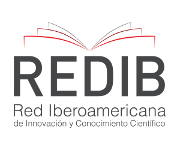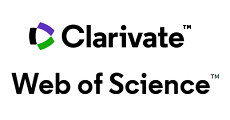A “feasible direction” search for Lineal Programming problem solving
Una búsqueda de "Direcciones factibles” para la solución de problemas de programación lineal
DOI:
https://doi.org/10.15446/ing.investig.v23n3.14703Keywords:
linear programming, simplex method, polyhedral characteristics, primal and dual linear programs relations, karush-kuhn-tucker optimality criteria (en)programación lineal, método simplex, características poliédricas, relaciones de los programas lineales principal y dual, criterios de optimalidad Karush-Kuhn-Tucker (es)
Downloads
The study presents an approach to solve linear programming problems with no artificial variables. A primal linear minimization problem in standard form and its associated dual linear maximization problem are used. Initially, the dual (or a partial dual) program is solved by a "feasible direction" search, where the Karush-Kuhn-Tucker conditions help to verify its optimality and then its feasibility. The "feasible direction" search exploits the characteristics of the convex polyhedron (or polytope) formed by the dual program constraints to find a starting point and then follows line segments, whose directions are found in affine subspaces defined by boundary hyperplanes of polyhedral faces, to find next points up to the (an) optimal one. Then, the remaining dual constraints not satisfied at that optimal dual point, if there are any, are handled as nonbasic variables of the primal program, which is to be solved by such "feasible direction" search.
El estudio presenta un enfoque para resolver problemas de programa con lineal sin el uso de variables artificiales. Se emplea la pareja dual: un problema lineal de minimización (principal) en la forma estándar y un problema lineal de maximización asociado (dual). Inicialmente, el programa dual (o un programa dual parcial) se resuelve por medio de una búsqueda de "direcciones factibles", donde las condiciones de Karush-Kuhn Tucker ayudan, primero, a verificar su optimalidad y después, su factibilidad. La búsqueda de "direcciones factibles" explota las características del poliedro (o politopo) convexo formado por las restricciones del programa dual para hallar un punto inicial y luego sigue segmentos de rectas cuyas direcciones se encuentran en subespacios afines definidos por los hiperplanos de frontera de las caras poliédricas, para hallar los puntos siguientes hasta el (o un) punto óptimo. Luego, las restricciones duales restantes no satisfechas en aquel punto dual óptimo, si hay alguna, se manejan como variables no básicas del programa principal, que se resuelve por la misma búsqueda de "direcciones factibles".
References
Alevras, D.; Padberg, M.W. (2001). Linear Optimization and Extensions, Problems and Solutions. New York: Springer-Verlag. DOI: https://doi.org/10.1007/978-3-642-56628-8
Banchoff, T,; Werner, J. (1992). Linear Algebra Through Geometry. Second Ed. New York; Springer-Verlag. DOI: https://doi.org/10.1007/978-1-4612-4390-8
Bazaraa, M.; Jarvis, J., y Sherali, H. (1990). Linear Programming and Network Rows, Second Ed. New York: John Wiley.
Dantzig, G.B. (1963). Linear Programming and Extensions. New Jersey: Princeton University Press, Princeton. DOI: https://doi.org/10.7249/R366
Gale, D. (1960). The Theory of Linear Economic Models, New York: McGraw-Hill.
Mangasarian, O. L. (1969). Nonlinear Programming. New York: McGraw-Hill.
Papadimitriou, C.H. (1998). Combinatorial Optimization: Algorithms and Complexity. New York Dover Publications, Mineola.
Rockafellar, R.T. (1970), Convex Analysis. New Jersey: Princeton University Press, Princeton,
Simonnard, M. (1966). Linear Programming. New Jersey: Prentice-Hall, Englewood Cliffs,
Stoer, J.; Witzgall, C. (1970), Convexity and Optimization in Finite Dimensions I. New York: Springer-Verlag. DOI: https://doi.org/10.1007/978-3-642-46216-0
Zoutendijk, G. (1976). Mathematical Programming Methods. Amsterdam: North-Holland Publishing.
How to Cite
APA
ACM
ACS
ABNT
Chicago
Harvard
IEEE
MLA
Turabian
Vancouver
Download Citation
License
Copyright (c) 2003 Jaime U Malpica Angarita

This work is licensed under a Creative Commons Attribution 4.0 International License.
The authors or holders of the copyright for each article hereby confer exclusive, limited and free authorization on the Universidad Nacional de Colombia's journal Ingeniería e Investigación concerning the aforementioned article which, once it has been evaluated and approved, will be submitted for publication, in line with the following items:
1. The version which has been corrected according to the evaluators' suggestions will be remitted and it will be made clear whether the aforementioned article is an unedited document regarding which the rights to be authorized are held and total responsibility will be assumed by the authors for the content of the work being submitted to Ingeniería e Investigación, the Universidad Nacional de Colombia and third-parties;
2. The authorization conferred on the journal will come into force from the date on which it is included in the respective volume and issue of Ingeniería e Investigación in the Open Journal Systems and on the journal's main page (https://revistas.unal.edu.co/index.php/ingeinv), as well as in different databases and indices in which the publication is indexed;
3. The authors authorize the Universidad Nacional de Colombia's journal Ingeniería e Investigación to publish the document in whatever required format (printed, digital, electronic or whatsoever known or yet to be discovered form) and authorize Ingeniería e Investigación to include the work in any indices and/or search engines deemed necessary for promoting its diffusion;
4. The authors accept that such authorization is given free of charge and they, therefore, waive any right to receive remuneration from the publication, distribution, public communication and any use whatsoever referred to in the terms of this authorization.



























